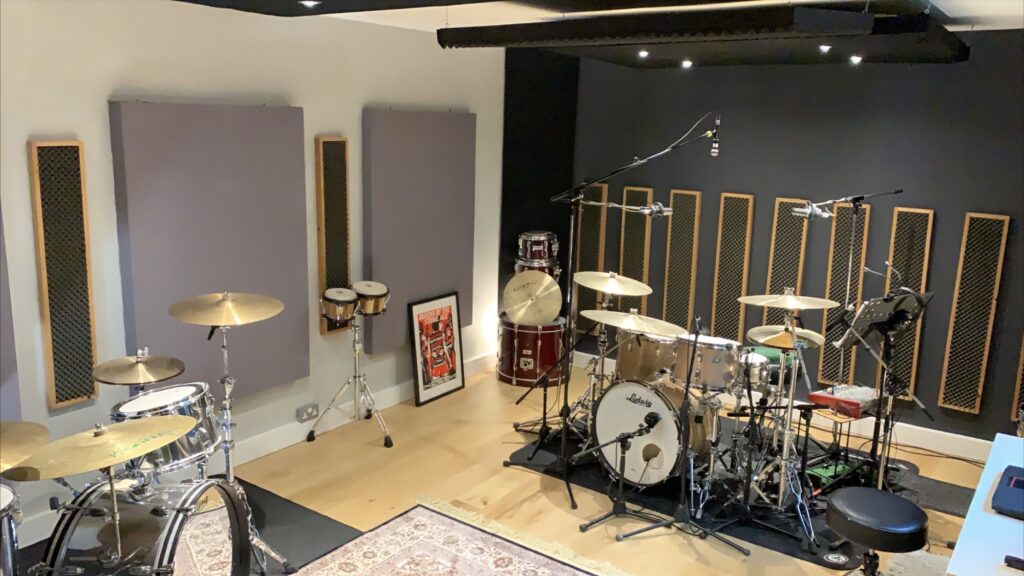When tackling noise issues in a space, it’s crucial to understand the difference between soundproofing and sound absorption. These terms are often used interchangeably, but they serve distinct purposes and require different approaches. This article will explore the differences, applications, and benefits of soundproofing vs sound absorption to help you make informed decisions for your noise control needs.
What is Soundproofing?
Soundproofing is the process of preventing sound from entering or leaving a room. It involves creating barriers that block sound waves. The goal is to achieve complete isolation from external noise or to prevent internal noise from escaping.
Techniques for Soundproofing
- Mass Addition: Adding heavy materials like mass loaded vinyl or dense drywall to walls, floors, and ceilings.
- Decoupling: Creating air gaps or using resilient channels to separate surfaces, reducing sound transmission.
- Sealing Gaps: Using acoustic caulk or weatherstripping to seal any gaps or cracks where sound can pass through.
- Soundproof Doors and Windows: Installing specially designed doors and windows that block sound more effectively than standard ones.
What is Sound Absorption?
Sound absorption focuses on improving the acoustics within a space by absorbing sound waves and reducing echo and reverberation. Unlike soundproofing, sound absorption does not block noise but rather controls it within the environment.
Techniques for Sound Absorption
- Acoustic Panels: Installing panels made from porous materials that absorb sound waves.
- Carpets and Rugs: Using soft flooring materials to absorb sound, especially in rooms with hard floors.
- Furniture and Decor: Adding upholstered furniture, curtains, and other soft items to absorb sound.
- Acoustic Ceiling Tiles: Using tiles that absorb sound to control noise levels in larger spaces.
Key Differences Between Soundproofing and Sound Absorption
Purpose
- Soundproofing: Aims to block and isolate sound, preventing noise from entering or leaving a room.
- Sound Absorption: Aims to improve sound quality within a space by reducing echo and reverberation.
Materials and Methods
- Soundproofing: Utilizes dense, heavy materials and construction techniques to create barriers.
- Sound Absorption: Uses porous, soft materials to absorb and dampen sound waves.
Applications
- Soundproofing: Ideal for recording studios, home theaters, offices, and any space requiring noise isolation.
- Sound Absorption: Useful in restaurants, open-plan offices, auditoriums, and residential areas to enhance acoustic quality.
When to Use Soundproofing
- Privacy Concerns: When confidential conversations or activities need to be isolated from outside ears.
- Noise Pollution: In areas with high external noise levels, like near busy streets or airports.
- Recording Studios: To prevent external noise from interfering with recordings.
When to Use Sound Absorption
- Acoustic Quality: In spaces where clear sound is essential, like lecture halls, conference rooms, and theaters.
- Noise Control: In open-plan offices and restaurants to reduce ambient noise and improve speech intelligibility.
- Home Environments: To enhance the comfort and usability of living spaces, reducing echo and improving sound clarity.
Contact Waseem Technical Soundproofing Expert in Dubai For Soundproofing: +971 50 209 7517
Conclusion
Understanding the difference between soundproofing and sound absorption is key to effectively managing noise in any environment. While soundproofing blocks sound from entering or leaving a space, sound absorption improves the acoustic quality within a space. Knowing when and how to apply each method will help you create the ideal sound environment for your needs.




